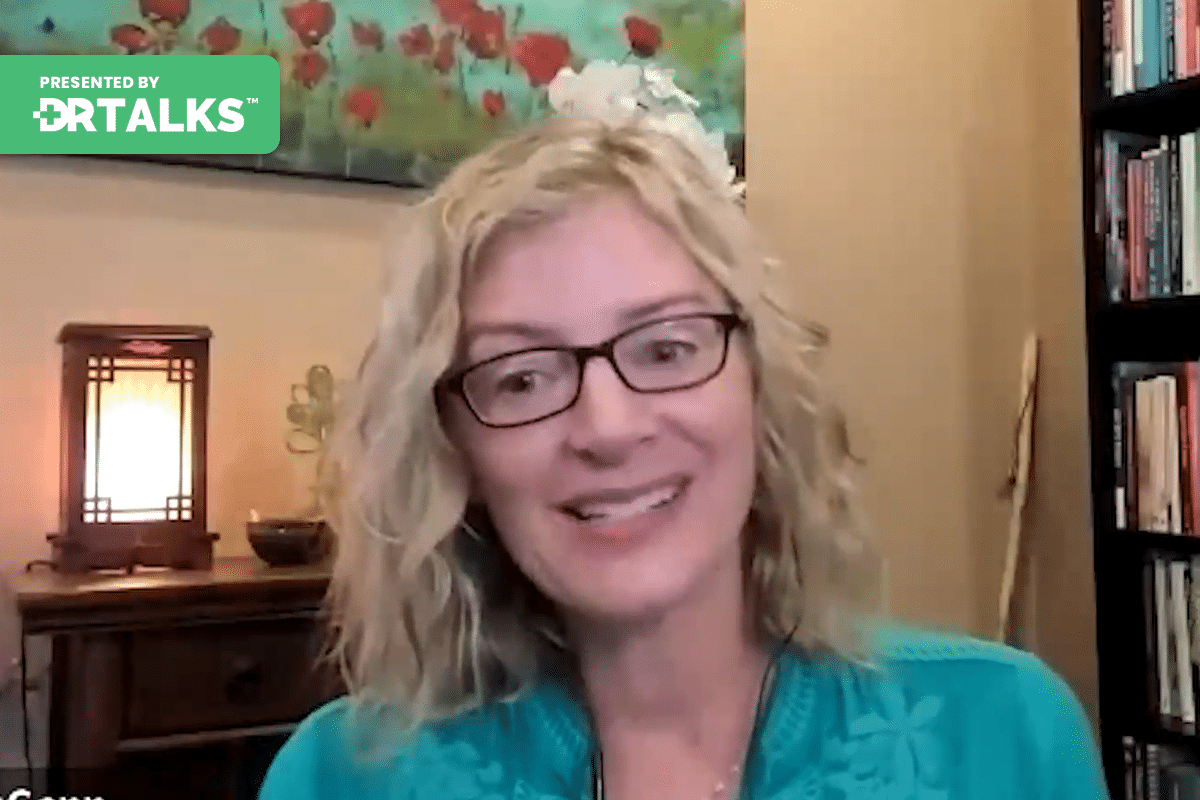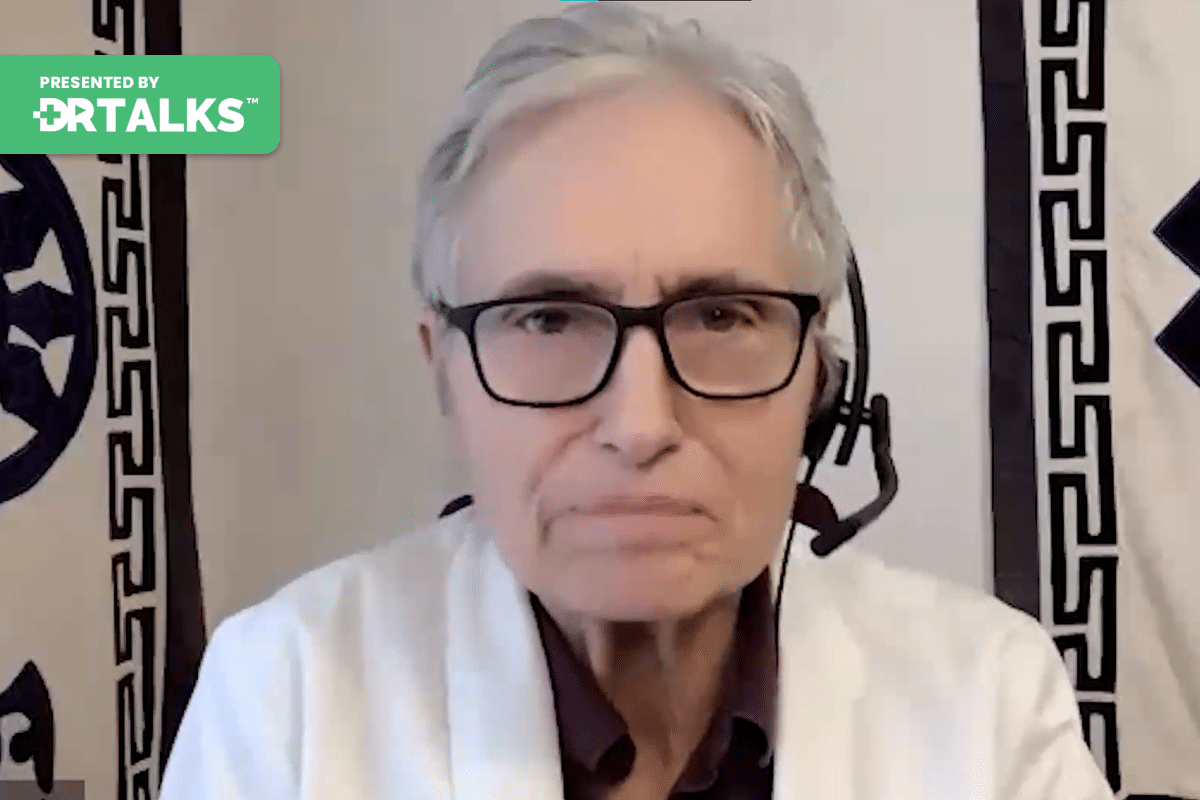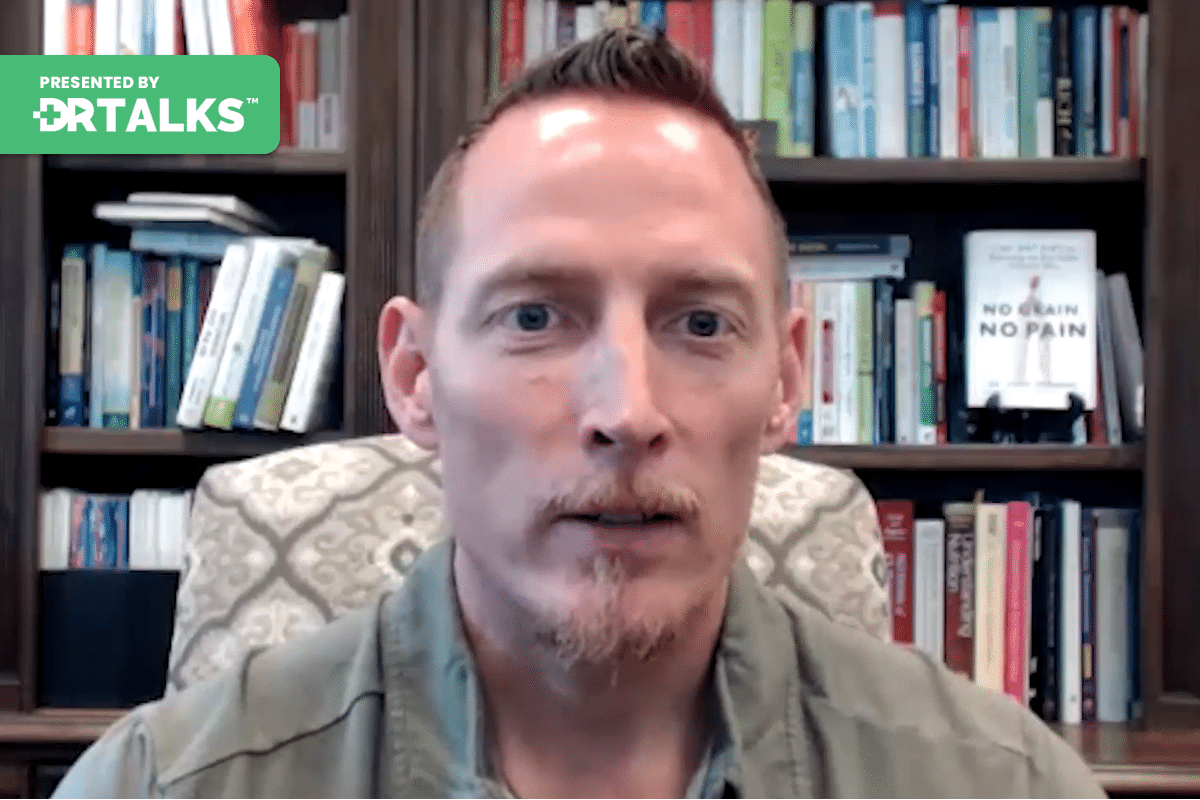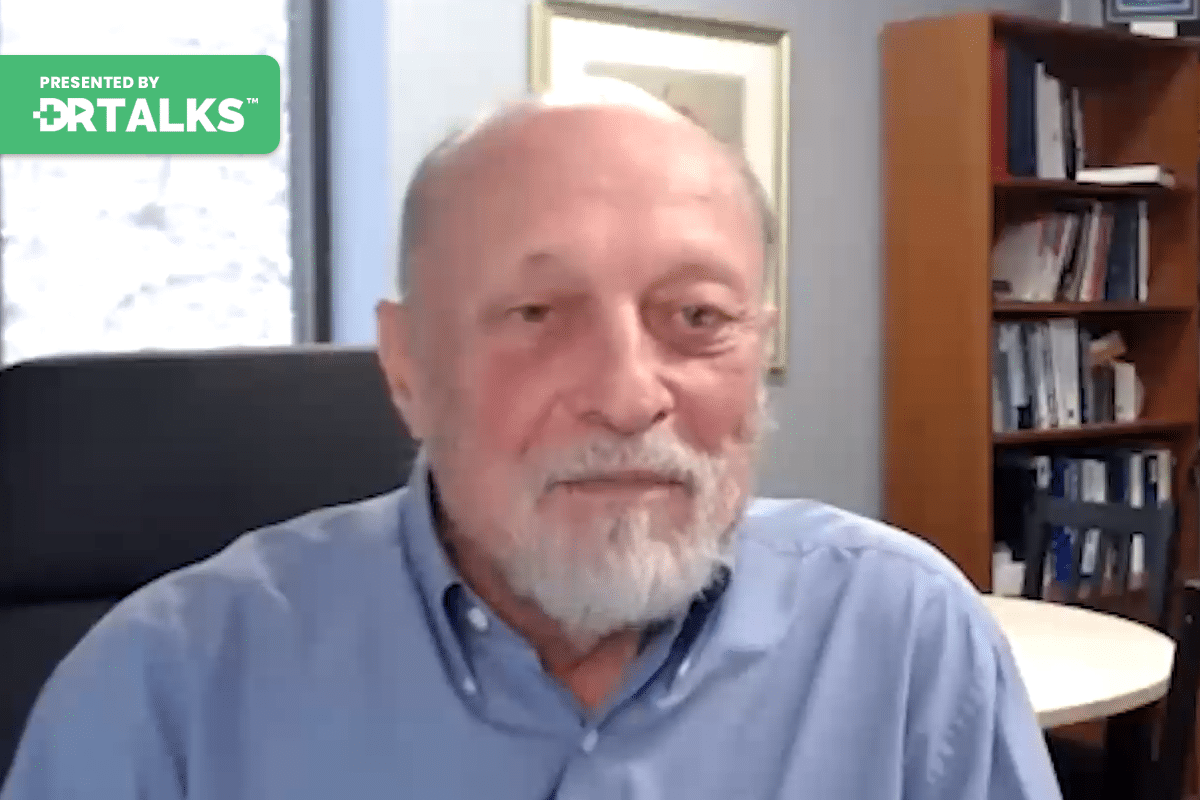Join the discussion below

Dr. Rodger Murphree is a chiropractic physician and board certified nutritional specialist. He is an internationally recognized fibromyalgia expert. His “Murphree Method,” a combination of functional and orthomolecular medicine, has helped thousands of patients get healthy and feel good again. He’s the author of 3 books for patients and doctors including... Read More

Kelly McCann, MD, passion for understanding why certain people develop specific conditions drove her beyond conventional medicine to study first Complementary and Alternative Medicine, then Integrative Medicine, Functional Medicine, and Environmental Medicine, which led to an exploration of chronic infections and illness due to mold exposure. As a practicing Internal... Read More
- What is Mast Cell Activation Syndrome?
- How MCAS can cause symptoms similar to Fibromyalgia
- What are the steps and best treatments to reduce MCAS?
Related Topics
Abdominal Pain, Allergic Reaction, Allergy, Biopsies, Bladder Issues, Bloating, Cardiac Symptoms, Cell Danger Theory, Chemokines, Chest Pain, Chronic Illness, Clinical Diagnosis, Colonoscopy, Constipation, Cromolyn, Cytokines, Diagnosis, Diarrhea, Endoscopy, Environmental Chemicals, Fibromyalgia, Gas, Gastrointestinal Issues, Glyphosate, Headaches, Health Coaching, Heavy Metals, Histamine, Hives, IBS, Immune System, Inflammation, Inflammatory Mediators, Interstitial Cystitis, Itchy Skin, Joint Pain, Leukotrienes, Lyme Disease, Mast Cell Activation, Mast Cell Activation Syndrome, Methyl Histamine, Migraines, Mold, Multiple Chemical Sensitivity, Muscle Pain, Nervous System, Neurological Symptoms, Palpitations, Pcbs, Post Nasal Drip, Prostaglandins, Shortness Of Breath, Sinus Symptoms, Sore Throat, Stains, Survival Paradox, Trip Tests, Upper Respiratory SymptomsRodger Murphree, DC, CNS
I welcome. I’m Dr. Rodger Murphree, and I’m your host of the Freedom from Fibromyalgia Summit. And I’d like to welcome Dr. Kelly McCann. She’s going to be joining us today. We’re going be talking about mast cell activation syndrome. If there’s not enough challenges out there for you now, we’re going to throw something else out there. This thing called mass cell activation syndrome, which I have unfortunately found to be a potential trigger for many of my fibromyalgia patients over the last several years as I’m learning more and more about this. But Dr. McCann is a specialist. This is one of her things, is she has several specialties, including Mode in line. But we’re going to be focusing on myself and meeting a lot of Dr. McCann as a triple board certified internal medicine, pediatrics and integrative medicine, as well as a certified as well as certified with the Institute of Functional Medicine. You’ve got a really interesting background, like I think I like a lot of physicians who come over from and I shouldn’t say this way, but from the dark side and I shouldn’t say it that way, but because it’s really, you know, there’s a time and a place for conventional medicine, but really functional medicine is something that really lends itself to going to, you know, many layers deep. And that’s why we both love it. So, Kelly, thank you so much for being part of this summit. Tell me a little bit about Marcel’s. What are they.
Kelly McCann, MD
At? Rodger Thank you for having me. I love talking about Marcel Activation, as you know. So mast cells are a normal part of our immune system and they’re a pretty ancient part of our immune system. They are the part that actually born in the bone marrow and they move to the periphery, meaning they line our areas of interface between ourselves and the outside world. So they line our up a respiratory tract, sinuses, nasal passages, gastrointestinal tract all the way down there on our skin. They have an affinity for our brains and our lymphatics, our vascular system, and their job is to fight foreign invaders. And so they’re constantly surveilling for foreign invaders. And when they see them, they are filled with these little packets of chemicals called mediators, and then they release their mediators when they perceive a threat. And those mediators are filled with a variety of different inflow dietary chemicals called cytokines, chemokines, prostaglandins, and one of the most famous ones is histamine. And so when these mass cells degrade and release all their inflammatory mediators, we can get a whole host of symptoms.
Rodger Murphree, DC, CNS
And so mast cells, there’s a connection between the immune system, you point that out, but also the immune system and the nervous system. So that’s a communication there.
Kelly McCann, MD
There’s a communication.
Rodger Murphree, DC, CNS
And oftentimes they’re released, as you said, when they when the body feels threatened. So the cells feel threatened from some type of could be an infection. There’s a connection with Marcel and some underlying triggers as well, like mold and Lyme disease, right?
Kelly McCann, MD
Sure. So mold is a foreign invader. Lyme disease is a foreign invader. All of the bacteria or internal parasites that are related to Lyme babesia Bartonella, those will all trigger nasal activation. Potentially they will trigger mast cells even in somebody who doesn’t have the full on presentation of nasal activation syndrome, those cells can also release mediators when they’re exposed to other environmental chemicals, glyphosate, heavy metals, PCBs, all of those things. So they’re really they’re primed for protecting us from foreign invaders. And then the problem with nasal activation syndrome is that these mass cells have now gone rogue and they start to perceive threats where there may not be a threat, like with eating certain kinds of foods or smelling certain chemicals. And we know that, you know, smelling chemicals like gas exhaust and all of the chemicals in the soaps and the cleaning aisle in the grocery store or scented candles. None of these things are great for us, but for patients who have massive activation, their mast cells are on heightened alert. And so they’re constantly dumping their inflammatory mediators, causing lots of symptoms in people, making them exquisitely sensitive to their environment and to the foods that they eat.
Rodger Murphree, DC, CNS
So this really falls into the category of cell danger theory and survival paradox, which I know you’re familiar with, which I think is a great paradigm. You know, this it’s really opened my eyes and explained some of my patients that are done well over the years. And then, you know, they have these fibro flares that we often see. But any time the body feels threatened, these mass cells are being released. That’s there. That’s part of their job. But if they don’t get turned off, as you mentioned, they go rogue. What are some of the symptoms of mast cell activation syndrome?
Kelly McCann, MD
So you could imagine that if you’ve got these mass cells everywhere in the body, that you can have a whole host of symptoms. And no one person, no two people present the same way. So you can have sinus symptoms upper respiratory symptoms, post nasal drip like allergy type symptoms. You can have sore throats, you can have gastrointestinal issues from IBS type symptoms, gas, bloating, diarrhea, constipation, abdominal pain. You can have itchy skin and hives. You could have cardiac symptoms, palpitations, chest pain, you can have shortness of breath because the mast cells can be in the lungs, too. You can have bladder issues, irritable bowel I’m sorry, irritable bladder symptoms, interstitial cystitis, which I know is common and patients with fibromyalgia as well. And then, of course, all of the inflammatory symptoms, too, because it’s not just about histamine. There are all these cytokines and chemokines that are being released. And so people have joint pain, they have muscle pain, they have neurological symptoms, they have headaches, they have migraines, and they may be reactive to certain chemicals. So multiple chemical sensitivity is also often a Marcel presentation.
Rodger Murphree, DC, CNS
So those that are watching this interview are going, yep, yep, check, check, check, because these are the many the symptoms that you would see for fibromyalgia, which, you know, that’s what makes one of the things that makes fibromyalgia such a challenge is you’ve got all these symptoms. We see this you know, we see the smoke, but we can’t find the gun. We know there’s inflammation. But oftentimes when you do blood work, the CRP is normal, said rates normal, and there’s no autoimmune disease that’s showing up. And yet we know there’s inflammation. So this is another example of how you can have inflammation that is not going to show up on a traditional test. How is this diagnosed? That’s it’s tough right stuff.
Kelly McCann, MD
Yeah, it is tough to diagnose. So we’ve got all of these inflammatory mediators. But unfortunate I mean, and there are thousands of them that these mass cells are producing. Unfortunately, most labs can’t process these tests. So there are probably half a dozen, maybe a dozen labs that we can check through specialty labs. There are a handful a couple that we can check through commercial labs. So you can check for histamine level in blood. You can check for trip tests and you can check for Cro-Magnon a in blood. Now, trip TS is an interesting measure because it is there are some practitioners, mostly allergists and immunologists, who believe that the only way that you can diagnose mass activation is if you have an elevated trip taste level when you’re having a flare. And this is what we what some of us call consensus, one, because many people are in a flutter all the time, how do you get a baseline and then show that you haven’t have had a specific increase amount in your trip taste level and trip taste is also a measure of the amount of mast cells in the body. And, you know, as the name implies, it’s an active problem, not a number of mast cell problem. So if there are too many mast cells, that’s actually a different condition called systemic masto, say, ptosis, which is actually a form of cancer of the mast cells. So if there’s an elevated trip taste level above like 12, you know, if it’s a couple points above 12, that can support the idea of mass activation.
But if the trip to this level is 80 or 90, that person really needs to be evaluated by an oncologist. So that’s churches. And then there are a couple of other markers that we can look for with specialty labs, making sure that the labs know how to manage these things. You can look for urine and blood, prostaglandins, Luca trains and their and other metabolites methyl histamine, for example. The last way that you can do this is looking for stains of biopsies in either bladder or anywhere along the gastrointestinal tract. So a lot of people get colonoscopies. When you reach a certain age, many people get endoscopies. You know, the upper endoscopy. And so those if there are biopsies available, you can have your physician rate for C, d 117 stains for. So and again, if there are elevated levels of mast cells, they’re greater than 20 per high power field. That is one of the supportive ideas, supportive labs for the definition. But fortunately the definition is now considered to be clinical diagnosis. So if you have a history that’s supportive of it and there’s labs that are supportive of it and you have a response to treatment that will get you the diagnosis.
Rodger Murphree, DC, CNS
So what? So I want to go back just a second. You talked a little bit. You mentioned it was brought out that I want to make sure this is clear. One of that, because this is such a difficult thing, is how do you separate an allergic reaction from a mass cell reaction? Because they’re different. This is not this is really not an allergic reaction. This is something different than that.
Kelly McCann, MD
Yes. So an allergic reaction is going to be pretty finite. And it may involve IGT, which is an immunoglobulin. So, for example, I have a shrimp allergy. You can check my blood levels to shrimp. They’re going to be high. You could also do a patch test with an ad with an allergist and show that I have a specific allergy to shrimp. And then I have a very known reaction to shrimp. Right. So a shrimp I exercise, I get anaphylaxis. Not so pretty. So that’s an allergy. And for most people, that’s going to be fine. Whether you have an allergy to trees or grasses or what have you, it’s typical, you know, sort of itchy, runny, itchy eyes, runny nose, sneezing, coughing, etc., can trigger more severe reaction. And there’s grades of allergic reactions. But with muscle activation, there are more symptoms. So you’re not often going to get cardiac symptoms with an allergy. You may not get bladder symptoms with an allergy. You may not get the extreme amount of inflammatory reaction all over the body with an allergy per se.
Rodger Murphree, DC, CNS
But what is interesting with Marcel and really I think in almost infuriating if you have if you or these individuals are have it is that it’s not like a food allergy. You know you eat their food. You’re going to have a reaction to changes all the time. And this kind of explains why some people will say, you know, I’ve gotten to where now I’m down to all I can do is eat rice. That’s it. Of everything. Now their world has shrunk. They’re there. They are really at the mercy of stimulation and things that are going on. And again, that goes back to the cell danger theory and the survival principle, how in conventional medicine and I made it the door said, I’m so sorry I said that because some of my best friends are, you know, still practicing conventional medicine. They do wonderful jobs. And I refer patients to them and thank goodness we have them. But obviously I’m a fan of functional medicine the way we practice. But in the conventional world, this is something that is not acknowledged for sure. I mean, it’s known about their studies. There’s papers. There’s people who allergists who, you know, treat this. But for the most part, people fall through the cracks that have this. Whether you go to the conventional practitioner or you go to a functional medicine practitioner, integrated doesn’t matter. These are the people that kind of go everywhere, try everything. And for whatever reason, they just can’t get the relief that they’re seeking. Right.
Kelly McCann, MD
Right. Yeah. I mean, it’s tough massage Activation Syndrome was only seen first in the medical literature in 2007. That’s not that long ago. And so there are practitioners now and of course, we’re trying to get more information out there so that patients can get the help that they need. The way that my colleagues and I who treat massage activation in the way that I think is most useful for patients at work we call ourselves consensus to. And this is Dr. Lawrence, Afrin, Dr. Kozy and Haris. Dr. Tanya Dempsey Mm hmm. Dr. Jill Carnahan, Dr. Neil Nathan, myself and many others as opposed to your traditional conventional allergist who tend to be more consensus, one which is that whole trip taste thing. So if you don’t meet the criteria, according to an allergist, and you’re convinced that you have mass activation, keep seeking because there are other practitioners out there who have better tools. Right. Who have an ability to make that diagnosis. Because the challenge with this is if you can’t if you don’t diagnose it, you can’t treat it appropriately. And I think for many patients with fibromyalgia, they may have an underlying muscle activation condition. And there’s so much hope, there’s so much that we can do from when we understand that the condition has mass activation.
Rodger Murphree, DC, CNS
So what is the percentage that are effective at mass cell activation soon? I’m just in North America. What are the those numbers?
Kelly McCann, MD
So in the developed world, I can’t even say North America because the literature came out of Germany. But in the developed world it’s thought to be 70% of the population, 17%. That’s a huge percentage.
Rodger Murphree, DC, CNS
It’s a huge percentage when you give it when you, you know, realize if I imagine maybe 6%, 7% and and I’ll be the first, you know, just be candid about it. I think the way that I’ve been successful helping my patients with mass sales, I never knew what it was. You know, I just applied the functional medicine principles are looking for the root causes and cleaning those out, whether that, you know, whatever that is. And oftentimes, you know, for fibromyalgia, that could be numerous things. But we already mentioned mold is a big problem, is a big one. So oftentimes just just getting these foreign invaders where or whatever it is, it’s the body feels that it’s being threatened. If you can clean that up. And again, there could be several food allergies. I mean, numerous like leaky gut. But as you do that, then this mass cell activation syndrome starts to turn down.
Kelly McCann, MD
Yes.
Rodger Murphree, DC, CNS
Yes.
Kelly McCann, MD
Now, with some people, you know, who are very limited in their diet, very limited in their capacity to take meds or supplements because of the muscle activation. That definitely hampers treating Lyme or mold. So oftentimes with the more sensitive mass of patients, that’s where I start to quiet everything down, because once we start to quiet things down, then there are better able to tolerate the treatments. So we can talk about treatment of Marcel now if you want.
Rodger Murphree, DC, CNS
Yeah, absolutely. And I think I just want to point this out that what I found, you know, two decades treating fibro is that the first thing you really do have to do is calm everything down because their nervous system, as other speakers will share on here, is overstimulated. And they perceive stimulation, stimuli, stimuli in a overabundant a manner where they overreact to it. So the first thing I find is calming everything down, and that’s usually calming down the different neurotransmitters making sure the serotonin level is built back up, gamma aminobutyric acid, so many other things. But I totally agree. If you don’t calm everything down, then if you try to be too aggressive and helping them navigate some of these things, it backfires. Yeah. So what are some of the treatments, both conventional and in natural? What are the treatments that you like?
Kelly McCann, MD
So I start with simple things, inexpensive things, you know, so everyone has access to over-the-counter antihistamines. Now, not everyone with nasal activation has histamine as an issue. And I think that that’s a really important. So just because you may or may not respond well to antihistamines doesn’t mean that you don’t have nasal activation. It just means histamine is not a player in in your in your presentation. But I love over-the-counter antihistamines, things like Zyrtec, Claritin, Allegra, Zazzle, Benadryl. There are some prescription versions of that clarinex or hydrocortisone, some older medications. They can work really, really well. Also the H2 blockers. So the Pepcid works really well. We used to have Zantac. We don’t have that anymore. Unfortunately. And then oftentimes I’ll move on to well, we can talk about the conventional things too, so that the LUKER train inhibitors, Singulair and and similar medications work. Well, aspirin can actually be really helpful with some patients.
There are some more aggressive medications or unusual medications that can be helpful. Hydroxy urea, imatinib, which you know is a tyrosine kinase inhibitor. I don’t tend to use it very often, but it is available. Things like Crumlin, which is great, that’s a muscle stabilizing medication key to stiffen, which is also a nasal stabilizing medication has to be compounded in the U.S. I’ve been playing around with reparative after talking with Dr. Theodora’s repetitive is a it has an antihistamine effect, but it also has a platelet activating factor inhibitor effect. And that one is only available through Canadian pharmacies at this point. But I do find that that’s very, very effective. You can use the Cromwell in nasally or orally for gastrointestinal issues. You can use it nebulizers for respiratory issues. So those are many of the pharmaceuticals that we’ll use. And then in terms of the supplements, I did some research for the Marcel Summit or at least 65 different supplements that are helpful for massage.
Rodger Murphree, DC, CNS
I think I’ve got maybe six or seven written one and I wanted to make sure we brought up. So this is, you know, this is going to open up my armory, you know, to be able. Yes, to get.
Kelly McCann, MD
Yeah, yeah.
Rodger Murphree, DC, CNS
What of the main ones you found that are the most helpful do you think.
Kelly McCann, MD
Quercetin works really great for a lot of people. Woody Allen, which is another one that Dr. Feo recommends. I like Pyramid for people are perilla seed pic. No actually I love that works. Great, great. Some people do very well with low histamine probiotic. I also like resveratrol for patients. Let’s see how enzymes now do. Enzymes are a little bit different. Dow is the enzyme that breaks down histamine in the gastrointestinal system. And so it’s really good for people who have more histamine intolerance type symptoms where they eat something and they have a reaction. And oftentimes you can have histamine intolerance and mast activation. But not everybody who has mass activation has histamine intolerance. So the Dow enzymes have to be taken before a meal before you eat a high histamine food or what have you. So those are some of the ones that I use.
Rodger Murphree, DC, CNS
Do you find so you mentioned so many of these that you mentioned or any histamine, they’re natural antihistamines. But they also have some other effects as well. Now, Kirsten, I know is one that I really like and or but you’re but you mention technology now, which I have not heard of reverse a trial which I had not heard of. I mean, I use those for other things, but I agree for asthma and some other things. But. So you’re saying that those can be very, very helpful as well, just taking it as a preventative, ongoing basis?
Kelly McCann, MD
Yes. Yeah. And, you know, depending upon what your what the patient is working on, of course, you want to minimize the number of supplements that you’re taking and maximizing the effect, you know, so if they have cardiovascular issues, the resveratrol might be really great with that if they have headaches or migraines. But maybe you’re using something like Butterbeer or Panadol, X or, you know, one one of those that have effects with it with headaches and migraines. I also like skullcap. So say there’s a patient with Lyme disease and you want to use skullcap with the Lyme patient. So there are ways to do double duty with a variety of different herbs provided that they’re helpful, right. So you know, if you’ve got 60 plus herbs that you could use and the patients are supersensitive, how do you choose? Right. That becomes very challenging. I do a lot of muscle testing, honestly. You know, as a commercial doctor, it’s a little strange, but I find, you know, for many patients are like, yeah, I love to have a tool. So I teach them how to do muscle testing.
Rodger Murphree, DC, CNS
Yeah. So, you know, that’s an art as there’s the science behind it to some people or you know would debate but it’s definitely there’s science behind it and it’s an art form. You know it’s like anything if you’re some people are better at it than others. Tell me about I wanted to ask you a little bit more. How would someone know ah, how what what would they suspect, how would someone whose list they’re listening to thinking, you know, maybe I have that, maybe I don’t. Are there any telltale signs that that person should be thinking of that may clue them that yeah, this, this could be an issue for me.
Kelly McCann, MD
So the way that I would think about it is it’s a multi-system multi-symptom allergic inflammatory condition. So if you’ve got more than you know, three systems involved and multiple symptoms, you want to start thinking nasal activation. So, you know, with your fibro patients, they’ve got sleep disorders. They often have just not just the fibromyalgia pain, but then they can have fatigue, they can have headaches and migraines, they can have bladder issues. They may have anxiety, depression, insomnia, all of those symptoms could be explained by nasal activation. So I think it’s when the patients experience multiple systemic symptoms, that’s when you have to think about it.
Rodger Murphree, DC, CNS
Yeah. And I find that it’s really the folks that tend to tell you, Oh yeah, I’m allergic to everything. Those are the people that instantly I’m thinking, okay, and I’ve already done a, you know, if it’s a new patient, I’ve already done a questionnaire or I’m asking about Lyme loan things that would tip me off. But if they tell me I’m, you know, chemical sensitive, that’s a big one. Right? Right. And, you know, they react to everything. I’m already thinking, man, this is massive. Do you ever do this? A challenge just to kind of see if they respond to an antihistamine like Claritin or. Absolutely. Because it’s non-drowsy or or if they’re struggling with sleep, maybe put them on Benadryl at night and Zyrtec late in the afternoon and just and just see if that alone makes a difference.
Kelly McCann, MD
Absolutely. Yeah. I will do that very commonly or or the other telltale sign is when people come in on an antihistamine.
Rodger Murphree, DC, CNS
Yeah. That’s.
Kelly McCann, MD
You know. Okay, you’ve already started self-medicating. That’s great. Yeah, that’s great.
Rodger Murphree, DC, CNS
Well, I’m going to place for sure, no doubt.
Kelly McCann, MD
Yeah. Yeah. Now, for some of my patients, they’re so sensitive that they can’t tolerate those medications. That’s the other clue. If people come in and they’re on, they have a lot of medication, medicine, allergies. It’s oftentimes not the medication that people are allergic to. It is the inactive ingredients in those medications. And so they need medications that are compounded. So I have two compounds. The antihistamines compound, you know, the Crumlin compound. These are some of my nasal patients require everything to be compounded, but then we find stuff that they tolerate and it starts to work.
Rodger Murphree, DC, CNS
Yeah. And most physicians even and I guess you would if someone’s listening is sitting well I’m going to it. This is me. I’m going to seek out Dr. McCann. I mean, there’s only there’s only I mean, there’s just not that many people who specialize who know that much about it. But if someone were seeking out someone locally, out almost all of us now practice. Thomas And I’m 100% down. That’s what they look for. An environmental allergist, practitioner, someone that’s a little more open to use the word open in. I mean, you know, but someone that’s a little more up on myself. Would that be an environmental allergist?
Kelly McCann, MD
Not necessarily so, yeah. Environmental medicine doctors? I would say yes, but not necessarily an environmental allergist.
Rodger Murphree, DC, CNS
Well, that’s what I mean. I’m sure so. Yes, yes.
Kelly McCann, MD
Yeah. So some people who are functional medicine trained may know about this, but they really need additional training. They’re not getting this in their standard courses. You know, if they’ve just gone no offense, I love I have found that they’ve just gone I have found you know, they may not know enough about nasal activation to manage a patient. So, for example, there’s a professional organization called the International Society for Environmentally Acquired Illness or i c i s e a I know those docs know more about not only mass activation but also some of the root causes, Lyme mold, etc. And so you might have better success with somebody like that. Now after my summit on so we, we have been trying to put together a list of practitioner ers who are willing to take patients. You know, I’m on a listserv with over 300 practitioners, but they’re not all they’re not all willing or able to put themselves on a list specifically for Marcel patients. So but you could you could reach out and, you know, we can we can try and get you in touch with somebody.
Rodger Murphree, DC, CNS
KELLY So if someone wanted to know more about you and your your practice, now you have a brick and mortar practice.
Kelly McCann, MD
I do a mortar practice called the spring center.
Rodger Murphree, DC, CNS
And if they wanted to learn more about you, what’s the website they would go to?
Kelly McCann, MD
So there are two websites. The brick and mortar practice is the spring. CENTCOM. And then my online presence is KellyKMcCannMD.com and that one there’s a blog and I have a couple of courses. I have an environmental medicine course that I think is actually really great where it kind of walks you through. What are the things that you could be exposed to in your own life, your habits, your home, etc. and then why? Why and what are the chemicals that you’re being exposed to and what to do about it? So that’s a great course. And I am in the process of working on a mold course as well.
Rodger Murphree, DC, CNS
Great. Fantastic. Well, can thank you so much. This is been really insightful. You know, this is a topic that, again, most people really probably this first time they ever heard about it, you know, you’re someone I think helped put it on the map. And hopefully we’re going to you know, we’re going to gather more and more research and more and more ways to be able to effectively diagnose somebody, you know, take that mystery out of the equation and it’s people like you that’s making that happen. So thank you so much.
Kelly McCann, MD
Oh, you’re welcome, Rodger. Thank you so much for having me.
Rodger Murphree, DC, CNS
Yeah, thanks.
Downloads










